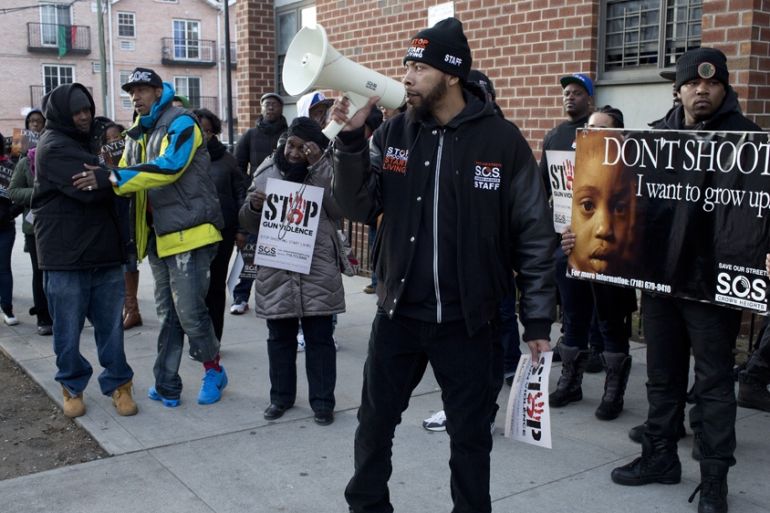US election snapshot: Ignoring dead black men
Who dies and where they were shot determines how much attention their deaths get and how many questions are asked.

Brooklyn, New York – Anti-gun community activists protest against a recent shooting on a street corner in Brooklyn in which a young man was wounded outside a school in the middle of the afternoon.
Gun violence is an American epidemic seemingly without a political solution. After every mass shooting, there is a lot of hand wringing as newspapers print editorials calling for a ban on military-grade assault weapons and basic background checks that would make it more difficult for the mentally ill to buy a weapon.
Keep reading
list of 4 itemsSummer Lee’s primary race tests fallout for critics of the US’s Gaza policy
Maldives votes in parliamentary elections amid India-China rivalry
Will India’s election be free and fair?
All of these debates, however, continue to ignore the grim statistical reality of homicide in the US. Who dies, and where they are shot, remain the key factors in how much media attention their deaths receive, and the extent of public outrage over how easy it was for the shooter to have a gun in the first place.
The vast majority of deaths from shooting occur in the poorest neighbourhoods of America’s cities because young black men are killing other young black men.
This grim cycle of violence is easily ignored by other Americans. It happens “over there”, in a section of town or a neighbourhood wealthier citizens rarely visit. Both the killers and victims are referred to as “gang members”. Sometimes that is true. Sometimes it is not. But the facts behind each killing are not important. By marginalising the dead, nothing needs to be done about it.
New York City has achieved historically low homicide rates, unlike much more violent urban centres such as Chicago or New Orleans. Tough gun laws are in place. Well-trained homicide detectives solve the majority of murders.
Money is spent on organising community groups to try and steer young kids away from settling disputes with guns, and the former mayor, the billionaire Michael Bloomberg, is a national leader in his efforts to ban guns.
In the late 1980s, at the height of the crack cocaine epidemic, almost 2,000 people were murdered in New York City each year. Now the numbers barely reach 350.
The political establishment sees this as a reason to celebrate. But the victims, their friends, and their grieving families can find no joy in the cold numbers. Each day in New York City, someone is shot.
Many black activists who are coming of age during an era of protests over excessive police violence realise that the struggle must begin at home. While white police officers patrolling their neighbourhoods with little respect for the people who live there remain a problem, young black men are most likely to die at the hands of other young black men.
The justification for all of these shootings can be alarmingly petty. A rival disrespected them, or lives on the other side of some invisible barrier. But of course, the real reasons are much deeper, and harder to solve. Unemployment, poverty, failed schools, three centuries of neglect, and yes, a nation that refuses to roll up its sleeves and actually make guns illegal, all play their part.
The views expressed in this article are the author’s own and do not necessarily reflect Al Jazeera’s editorial policy.